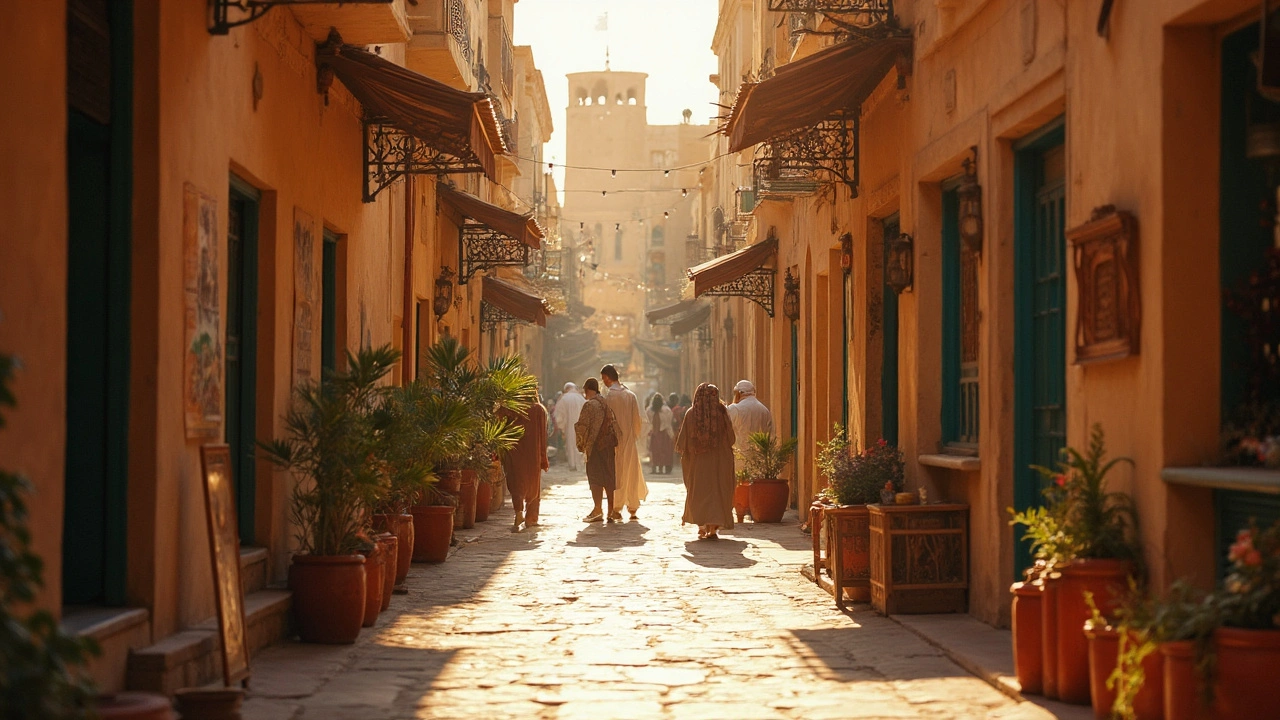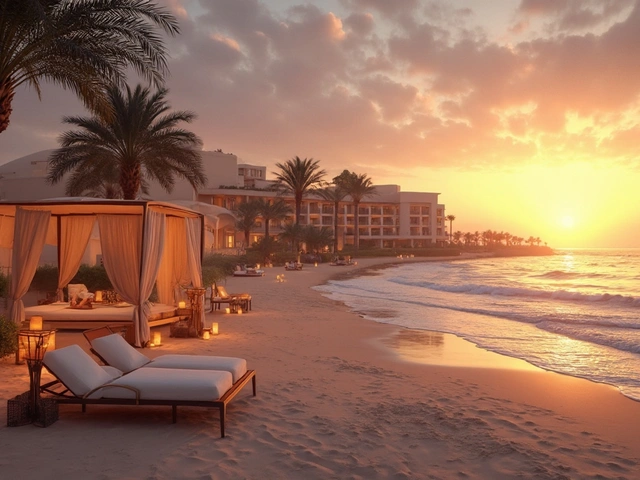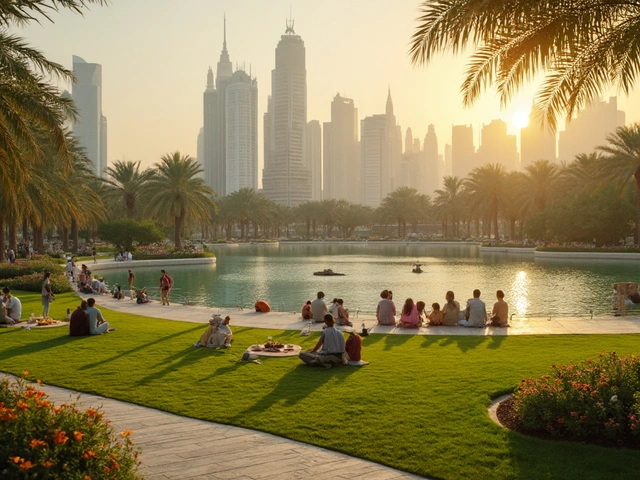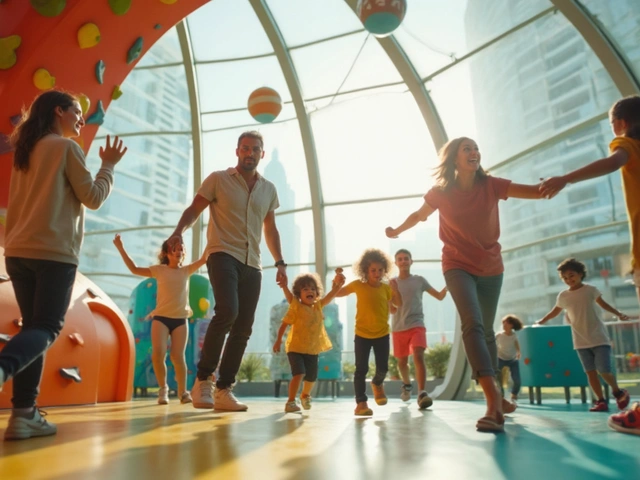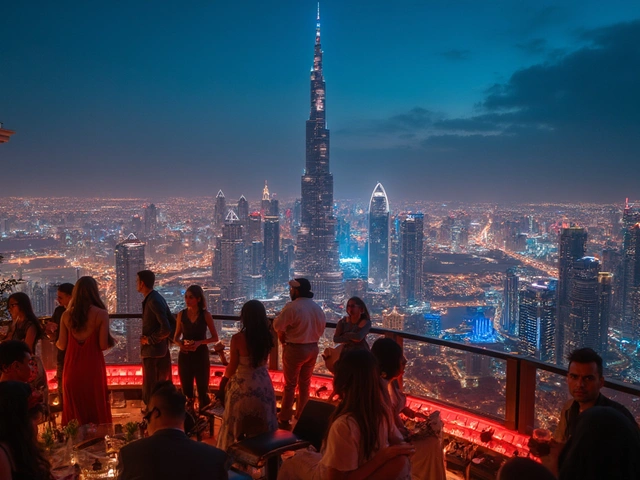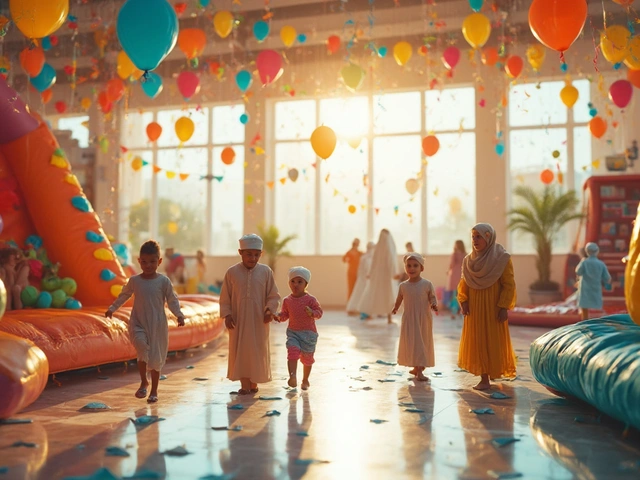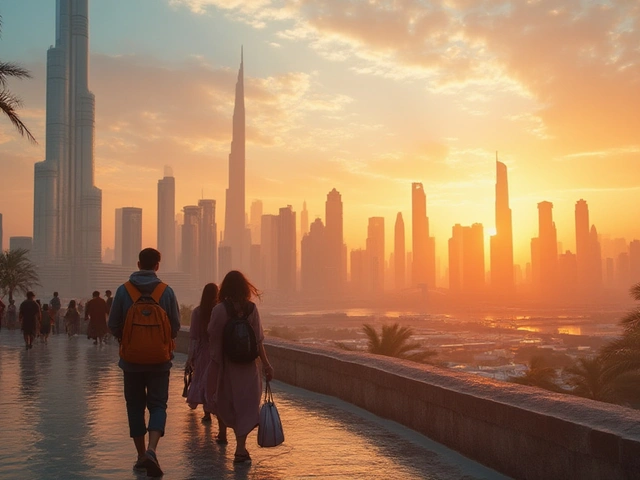You can stroll through the souks of Deira or wander Al Fahidi Historical Neighbourhood and feel the difference—this is the side of Dubai that lived long before the world’s tallest tower. Visiting historical sites in Dubai isn’t just about taking a break from the malls; it’s like flipping back to the city’s early days, when dhows glided down Dubai Creek and sand settled on wind towers instead of glass facades.
The thing about Dubai is, history isn’t only tucked away in museums. You’ll find stories in the walls of Al Fahidi Fort, in the scent of spices drifting from Bur Dubai souk, and in the call to prayer at Jumeirah Mosque. These places are easy to reach using the Metro or even an abra across the Creek—regular life meets the city’s heritage with almost zero effort.
If you’re new to Dubai, keep in mind: many of these historical attractions offer guided tours in English and Arabic, and plenty have shaded courtyards, benches, and cafes nearby (make a stop for chai at Arabian Tea House if you’re heading to Al Fahidi). Friday mornings are quieter if you’d rather dodge crowds. And with more cultural events during winter (hello, Sikka Art Fair), you might catch extra exhibitions or heritage performances as a bonus.
- Why Dubai’s Historical Sites Matter
- Top Heritage Spots to Visit
- Local Traditions Brought to Life
- Planning Your Visit: Tips for Residents and Tourists
- Preserving Dubai’s Past for the Future
Why Dubai’s Historical Sites Matter
It’s easy to get distracted by super-tall hotels and nonstop new builds, but there’s a lot happening below the surface in Dubai’s older areas. These historical spots aren’t just leftover buildings—they’re keys to understanding how Dubai became the city it is today. When you walk through sites like Al Fahidi Historical Neighbourhood and Dubai Creek, you can actually see the smart ways people adapted to the desert before air conditioning and skyscrapers.
For locals, expats, and tourists, visiting old Dubai helps you fit into the community, not just pass through. Stories about pearl divers, traders from Iran and India, and Bedouin families suddenly make sense when you’re standing at the water’s edge or tracing the carved woodwork on a wind tower. That’s why schools here often take students on field trips to historical areas—kids learn how modern Dubai came from a village beside the Creek, where everything depended on the tides and trade.
Historical sites in Dubai matter because:
- They connect people to UAE traditions and family roots.
- They show off the city’s global side, with influences from Africa, Persia, and India.
- They help everyone, even newcomers, feel a sense of local pride.
Tourism boards back this up: according to Dubai’s Department of Economy and Tourism, more than a third of visitors check out heritage spots—not just malls and beaches. If you plan to live or work in the UAE, learning about these places helps in daily life, especially during Ramadan, National Day, or even when chatting with Emirati friends.
| Historical Site | Year Opened/Established | Main Feature |
|---|---|---|
| Al Fahidi Fort (Dubai Museum) | 1787 | Oldest building in Dubai |
| Sheikh Saeed Al Maktoum House | 1896 | Home of Dubai’s former ruler |
| Jumeirah Mosque | 1979 | Open for non-Muslim tours |
So, when someone asks why bother with Dubai’s older side, the answer is simple: these places tell the city’s real story, and they make Dubai feel like home—not just a stopover.
Top Heritage Spots to Visit
If you want to get a real feel for Dubai beyond the skyscrapers, start with these places. Each spot has its own character, and you don’t have to be a history buff to enjoy them. Here’s what stands out in Dubai’s heritage circuit.
- Al Fahidi Historical Neighbourhood — This area is basically an open-air museum. You’ll see wind towers, narrow lanes, cozy cafes, and galleries. The Dubai Museum (inside Al Fahidi Fort) sits here too, and it’s the UAE’s oldest building, dating back to 1787.
- Dubai Creek — The Creek is where the city started and trading still happens every day. Take an abra for just one dirham to cross between Bur Dubai and Deira. The docks are full of old wooden dhows, many still hauling goods to places like Iran and India.
- Jumeirah Mosque — This is the only mosque in Dubai open to non-Muslims for guided tours. It’s one of the best ways to understand local religious customs, and the team at the Sheikh Mohammed Centre for Cultural Understanding makes everyone feel welcome.
- Al Seef District — A newer place made to look old, Al Seef shows off traditional architecture but has shops, restaurants, and pop-up markets. It’s along the Creek, close to Al Fahidi, so you can combine both in one visit.
- Hatta Heritage Village — For a break from the city, head out to Hatta (about a 90-minute drive). The historic village has mud houses, a fort, and mountain views. Winter is the best time to go; there are local food trucks and cultural demos on weekends.
If you’re short on time, try mapping out your route so you can hit a few places in one day—Al Fahidi, Dubai Creek, and Al Seef are close together, for instance. Consider booking tours with local guides; look for those with reviews on GetYourGuide or Viator for a smoother experience.
| Site | Opening Hours | Entry Fee (AED) |
|---|---|---|
| Al Fahidi Historical Neighbourhood | All day (Dubai Museum 8:30am-8:30pm Sat-Thu; 2:30pm-8:30pm Fri) | 3 (Museum) |
| Dubai Creek (Abra Ride) | 6am-12am | 1 |
| Jumeirah Mosque (Tour) | 10am & 2pm (Sat-Thu) | 35 |
| Al Seef District | All day | Free |
| Hatta Heritage Village | 7:30am-8:30pm (Sat-Thu); 2:30pm-8:30pm (Fri) | Free |
Remember, some places close for prayer times on Fridays, and hours might change during Ramadan. Always check online or call ahead if you’re visiting during holidays or special events.
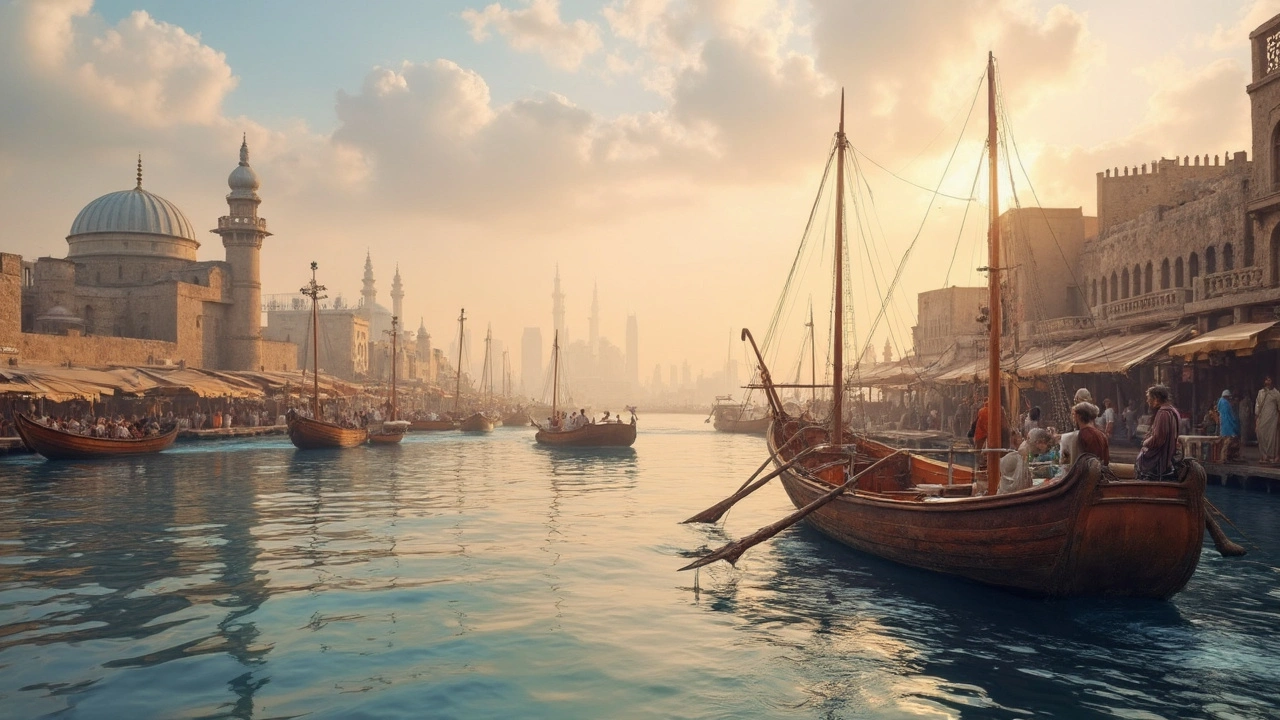
Local Traditions Brought to Life
Dubai might be all about futuristic buildings on postcards, but you don’t have to search far to see local Emirati culture happening for real. Head to the Sheikh Mohammed Centre for Cultural Understanding (SMCCU) in Al Fahidi, and you’ll see what I mean. They run traditional Emirati breakfasts where you can literally sit on the floor, share regag (that’s thin Emirati bread), and ask questions—even the awkward ones—about local customs, prayer times, or why coffee is always poured from the left. Everything is straightforward, and you’ll probably walk out with a few new stories to tell.
One thing that stands out in old Dubai is the art of pearl diving. Before oil, the city’s economy was based on pearling, with crews spending months out at sea. Today, you can visit Dubai Creek and see wooden dhows and old diving gear at the Dubai Museum. For a hands-on peek, some events during the National Day celebrations or Global Village offer pearl-diving demos where locals explain how it worked, using the original nose clips and baskets.
- Historical sites Dubai often double as spaces for live calligraphy demos; at Alserkal Avenue and Al Fahidi, local artists will let you try your hand at Arabic letters for free.
- If you haven’t caught an Emirati dance yet, look out for traditional Al Ayala and Harbiya performances at Dubai Festival City or Heritage Village during UAE holidays. Drums, chanting, and those long walking sticks—way more impressive in person than on TikTok.
- Most of the old markets—especially the Spice Souk and Textile Souk—have traders who’ll walk you through everything from saffron to how Arabic perfumes are mixed. Just ask!
Ever noticed that Dubai holds the annual Sikka Art and Design Festival in Al Fahidi? Each year, dozens of Emirati and resident artists set up in former merchants’ houses, creating murals or installations with local themes. These aren’t just selfies opportunities; you’re basically seeing modern Dubai blend with old traditions, and there’s a lot of interaction with artists if you’re curious.
| Traditional Experience | Where to Find It | Best Time |
|---|---|---|
| Emirati Breakfast & Q&A | SMCCU, Al Fahidi | Year-round, book ahead |
| Pearl Diving Demo | Dubai Museum, seasonal events | National Day, Global Village season |
| Arabic Calligraphy | Alserkal Avenue, Heritage Village | Culture festivals and workshops |
| Traditional Dance | Heritage Village, Dubai Festival City | UAE holidays, weekends |
| Spice & Perfume Making | Spice & Textile Souk, Deira | All year, mornings are best |
Blending history with daily life is part of what makes Dubai’s old neighborhoods feel genuine. So if you want to soak up traditions, skip the generic experiences and put these real deals on your list.
Planning Your Visit: Tips for Residents and Tourists
If you want to get the most from historical sites Dubai offers, a little bit of planning goes a long way. This stuff isn’t complicated, but missing the details can sour the experience.
First up, check timings. Al Fahidi Historical Neighbourhood is best seen in the morning, before the heat gets wild—think between 9:00 AM and 11:30 AM. Dubai Museum at Al Fahidi Fort opens from 8:30 AM to 8:30 PM, but Fridays start after 2:30 PM. Jumeirah Mosque runs public tours at 10:00 AM every day except Fridays. Advance booking isn’t required, but if you’re coming as a group, it helps to call ahead, especially if you want a guided tour.
What to wear? You don’t have to dress up, but do cover your knees and shoulders—this shows respect and lets you blend in. Jumeirah Mosque even offers traditional attire to borrow if you want a photo or want to join in on a tour.
- Use public transport when possible; Dubai Metro’s green line stops right at Al Ghubaiba and Al Fahidi stations, close to most historical neighborhoods.
- Abras (wooden water taxis) on Dubai Creek cost only AED 1 per ride—way more fun than sitting in traffic.
- Don’t forget your Emirates ID or passport. Some sites offer resident discounts or want ID for entry.
- Water and sunblock are a must between May and September. There’s shade, but not everywhere. Cafés like XVA Art Café or Arabian Tea House offer a cool break and decent snacks.
- Photography is welcome almost everywhere, just check first when inside mosques or private exhibits. Flash is a no-go in museums.
| Site | Opening Hours | Entry Fee | Nearest Metro |
|---|---|---|---|
| Dubai Museum (Al Fahidi Fort) | 8:30AM-8:30PM (Fri from 2:30PM) | AED 3 (adult), AED 1 (child) | Al Fahidi |
| Al Fahidi Historical Neighbourhood | 24/7 (shops vary) | Free (museums charge separately) | Al Fahidi/Al Ghubaiba |
| Jumeirah Mosque | Tours at 10AM (except Fri) | AED 35 (with refreshments) | Al Jafiliya (taxi needed) |
Special events—like Dubai’s National Day, Sikka Art Fair, and Ramadan Heritage Nights—bring extra life to these neighborhoods. These events can mean bigger crowds, but they’re great for experiencing food stalls, live demos, and traditional performances. If you want to skip the crowds but still catch something special, try visiting just after an event wraps up. You’ll see decorations and sometimes catch lingering workshops or pop-up markets.
One thing a lot of newbies miss: Dubai’s museums and heritage programs often roll out free activities for kids during school holidays. Ask about family passes or workshops at Dubai Museum and Sheikh Mohammed Centre for Cultural Understanding—they update offerings all the time.
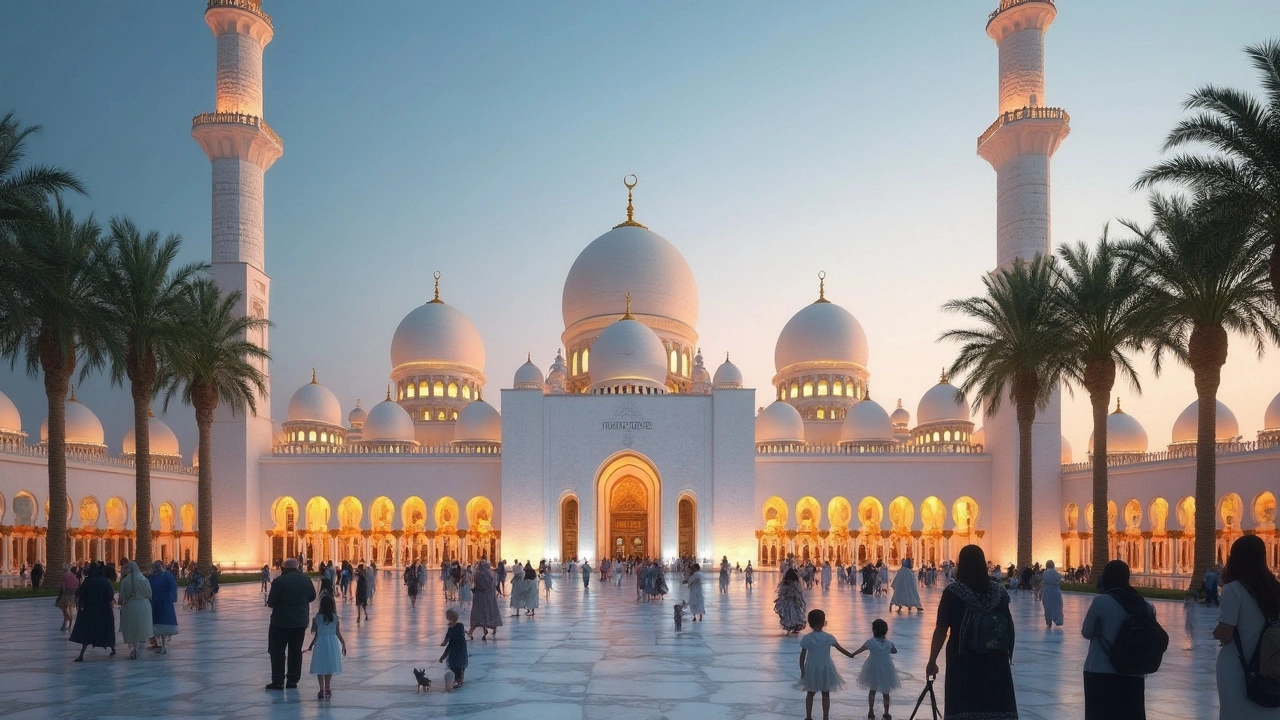
Preserving Dubai’s Past for the Future
Dubai moves quickly—historic sites can easily get buried by new skyscrapers if no one looks after them. That’s exactly why the Dubai Municipality and the Department of Tourism and Commerce Marketing put real effort into protecting spots like Al Fahidi Historical Neighbourhood and Al Shindagha. These aren’t relics you walk past; they get official restoration, round-the-clock security, and even climate tech to stop old bricks from crumbling in the heat.
Look at Al Fahidi Fort, now home to the Dubai Museum. It’s been restored using traditional coral and gypsum, just like the original builders did in 1787. Heritage experts even bring in craftspeople from old Emirati families for repairs. The same goes for Sheikh Saeed Al Maktoum House—officials made sure to keep the wind-tower designs and inner courtyards so visitors can see how Dubai’s rulers really lived.
The Dubai Culture & Arts Authority runs projects to bring new energy to these spaces. They turn old homes into art hubs, host events like the Sikka Art & Design Festival inside heritage districts, and support guided walking tours. Private brands also step in; Emirates NBD backs many restoration grants, and school groups visit for hands-on learning about Dubai’s timeline.
Here’s a snapshot of some key efforts and numbers on heritage preservation:
| Initiative | What It Covers | Year Started | Notable Facts |
|---|---|---|---|
| Al Fahidi Restoration | Full traditional rebuild of wind towers, coral-house structures | Early 2000s | Over 50 homes restored for public use |
| Shindagha Museum | Interactive exhibits, restored houses along the Creek | 2019 | Cost over AED 100 million to develop |
| Cultural Festivals | Sikka Art, Dubai Heritage Week | 2011 (Sikka) | Attract local and international artists yearly |
| Heritage Site School Visits | Organized trips for students | Ongoing | Over 20,000 students visit annually |
If you want to help keep historical sites Dubai alive, attend local heritage events or volunteer at one of the museums. Share your visits on social media—Dubai’s cultural authorities really do track what the public is excited about, and community love can help save the next endangered spot before it’s gone.

